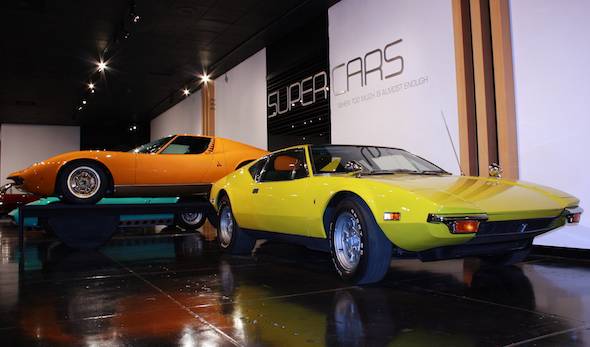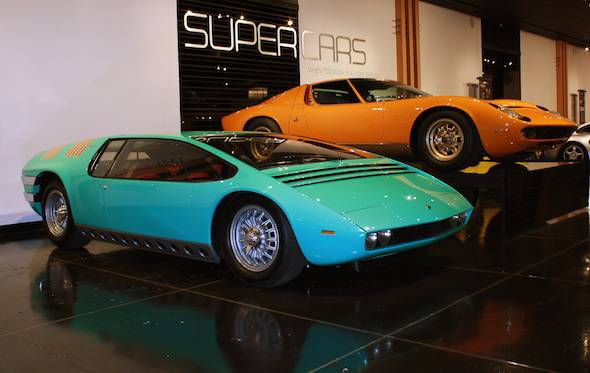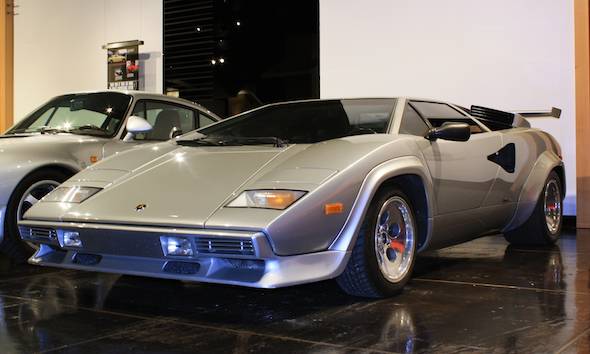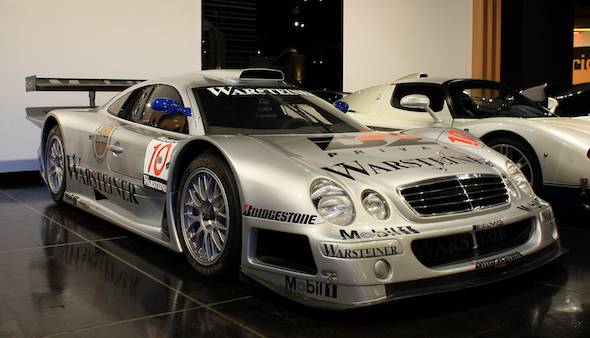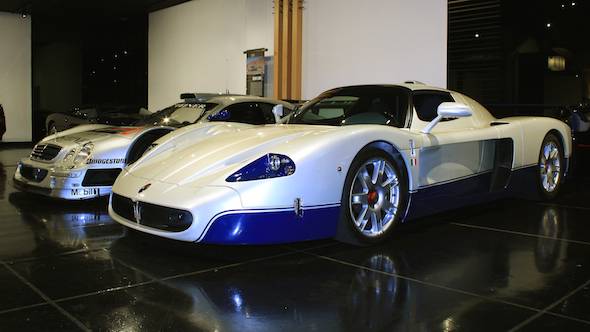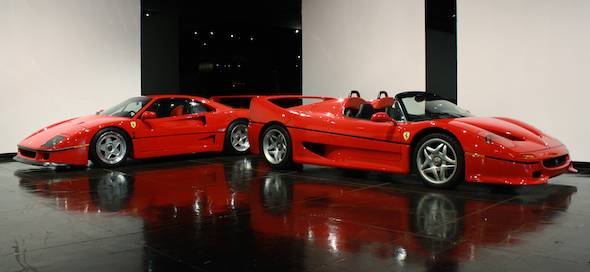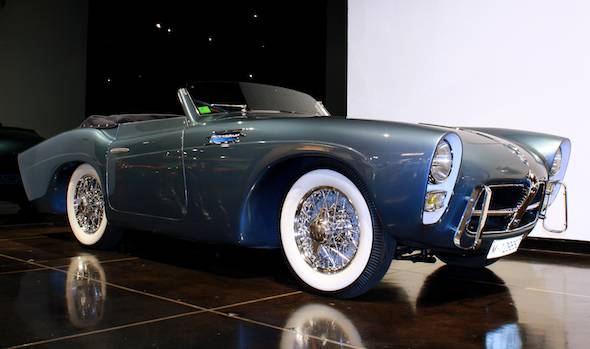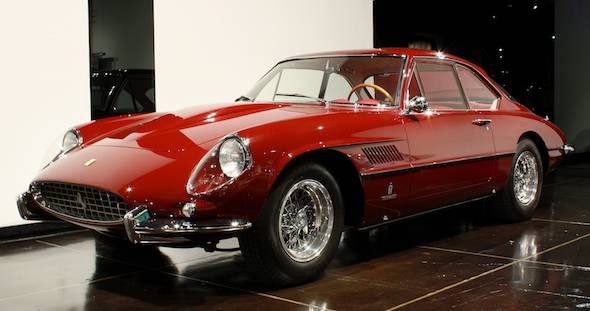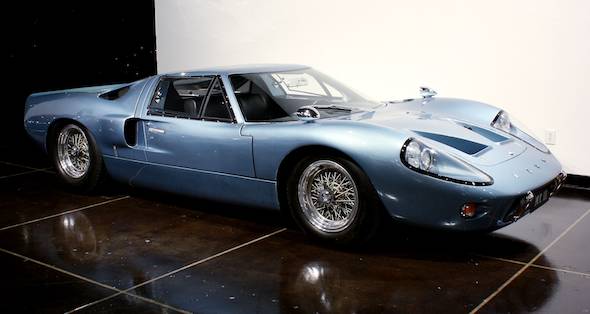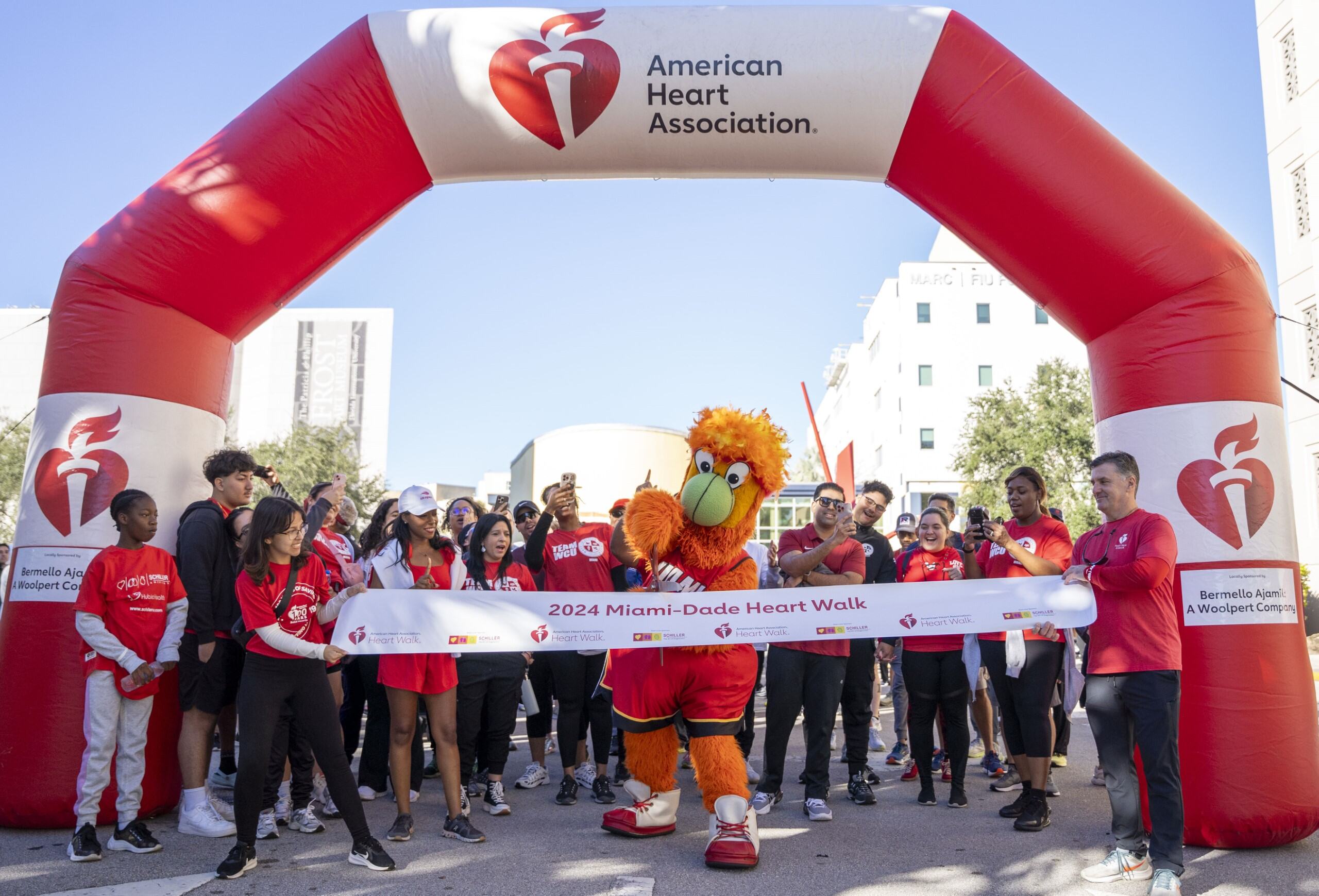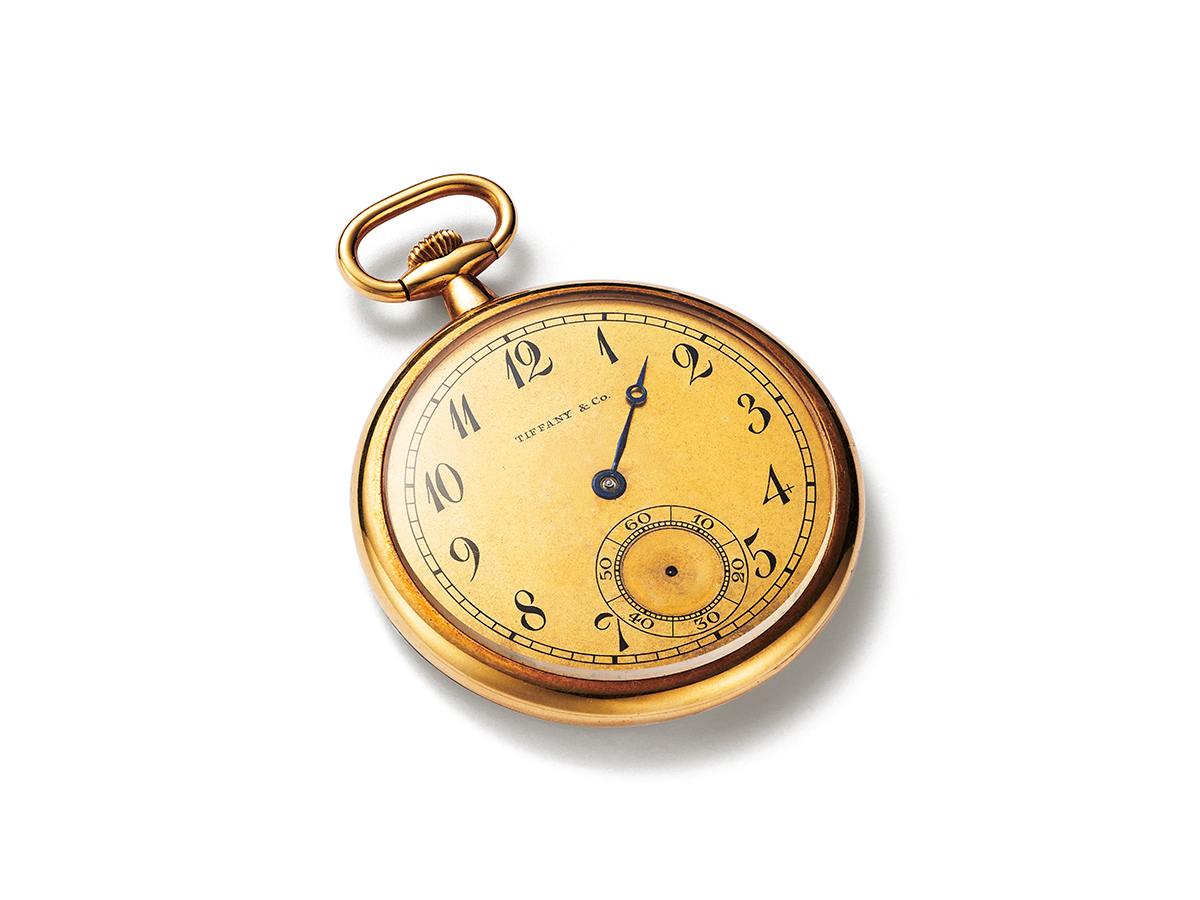Supercars: When Too Much Is Almost Enough
With its forgiving climate and unusual concentration of high-profile power earners, Los Angeles is pretty much conceded to be the American mecca of roadgoing supercars. Indeed, a cursory drive through Beverly Hills will usually have you crossing paths with a Ferrari F430, Audi R8 or a Mercedes-Benz SLR-McLaren. So in putting together an exhibit celebrating the concept of the supercar, the Petersen Automotive Museum faced a tough task in elevating their “floor models” to a cut above the cars buzzing past just outside their doors on Wilshire Boulevard. Their solution? Assemble some of the rarest and most expensive sports cars of each era, including more than one limited-production car from the automotive braintrusts of France, Germany, Italy and the good ole USA. The result is an exhibit that will likely have even the most accomplished car collectors pining with envy.
Running through October 16, Supercars: When Too Much Is Almost Enough features 18 of history’s most arresting high-horsepower sports cars, ranging from a 1923 Mercedes-Benz Targa Florio to a 2006 Bugatti Veyron. Here’s a few highlights…
Funnyman Adam Carolla’s 1969 Lamborghini Miura S (above, left) takes center stage in the exhibit, flanked by the museum’s 1971 De Tomaso Pantera. The V-12 powered Lambo, often regarded as one of the first true modern supercars, could reach 173 mph, while the Ford V-8 powered Pantera trailed only slightly at 159 mph. To boot, the Petersen’s Pantera was once owned, and shot, by Elvis Presley…the bullet holes remain in the steering wheel to this day.
Carolla’s car is bookended by the 1968 Bizzarrini Manta (owned by Ron and Diane Spindler), a one-off showcar that former Bertone and Ghia stylist Giorgetto Giugiaro debuted at the Turin Auto Show to promote his then-new company, Ital Design. The Manta features an unusual 3-seat cockpit, a configuration later copied in the iconic McLaren F1.
This 1985 Lamborghini Countach (owned by Dan Ellis) is a prime example of one of the most recognized supercars of all time. Its Marcello Gandini design is widely credited to have led the pack in the wedge styling movement that dominated the 70s and 80s, in makes such as Lotus, TVR, Delorean, and Triumph.
Rare and expensive even by the standards of the exhibit, this 1999 Mercedes-Benz CLK-GTR (owned by Rusty West) is one of just 25 road cars that were produced to meet the homologation rules that would qualify the model to race competitively. Pricetag when new? A cool $1.5 million.
This 2005 Maserati MC12 (owned by the Riverside International Automotive Museum) is one of just 50 produced. Developing 630 hp and capable of reaching 205 mph, the MC12 marked Maserati’s return to racing after a 3½ decade hiatus.
From the museum’s collection of Ferraris come these two commemorative models, which respectively celebrated the 40th and 50th anniversaries of the marque: a 1990 F-40 (left) and a 1995 F-50 (right).
Leave it to the Spanish to come up with such a splendidly singular vision of speed and elegance. This 1954 Pegaso Z-102 (owned by Chuck Swimmer) features a body by French coachbuilder Saoutchik, and is one of only 84 Pegasos ever produced.
Still regarded as one of the most desirable grand touring Ferraris ever, the 400 Superamerica was produced in two series. This 1963 example (owned by Don and Carol Murray) is one of 19 second-series cars that were bodied as coupes, and was once owned by former Vice President Nelson A. Rockefeller.
After its GT40 won four straight 24 Hours of Le Mans in the late 60s, Ford began to develop a roadgoing version that would transform racing success into sales figures. Unfortunately, the original car’s qualities did not translate very well into about-town comfort, leaving Ford to eventually pull the plug after tepid sales. (Ironically, the car they next developed to fill the exotic sports car niche was the aforementioned Pantera, which they equipped with a 351 cubic inch V-8 and sold through their dealer network.) This uber-rare 1967 example of a roadgoing GT40 (owned by the Petersen) is one of just seven of the Mark III cars that finished the model’s run.
For more information, visit www.petersen.org
Photos by Mike Daly

